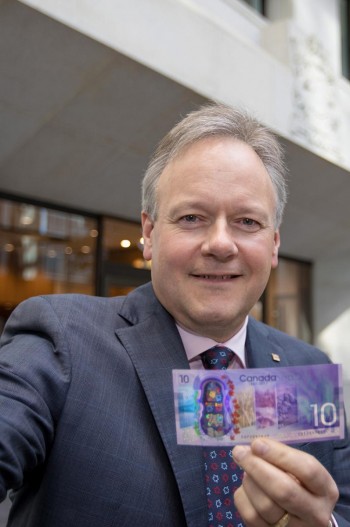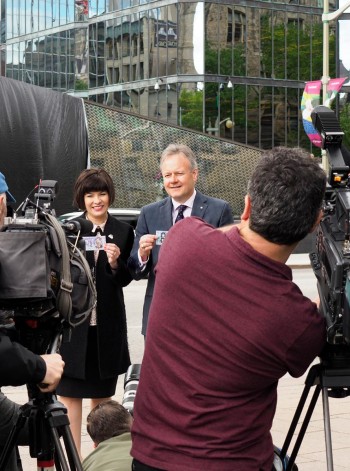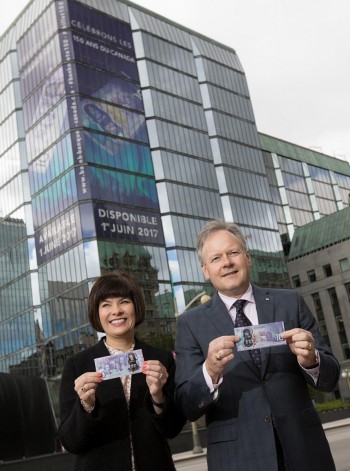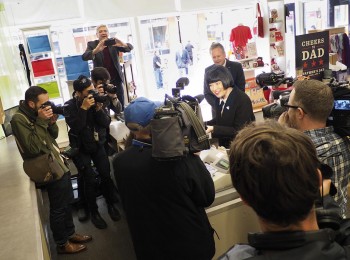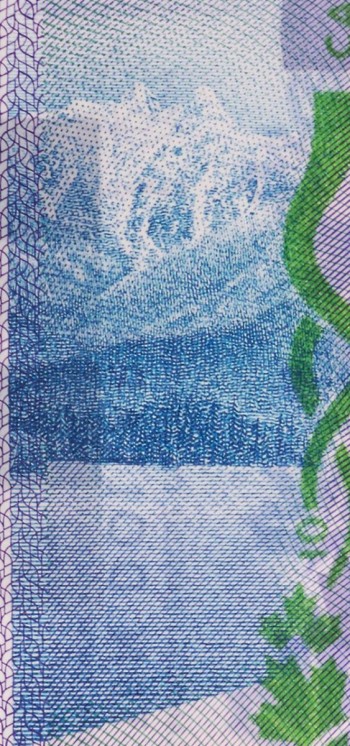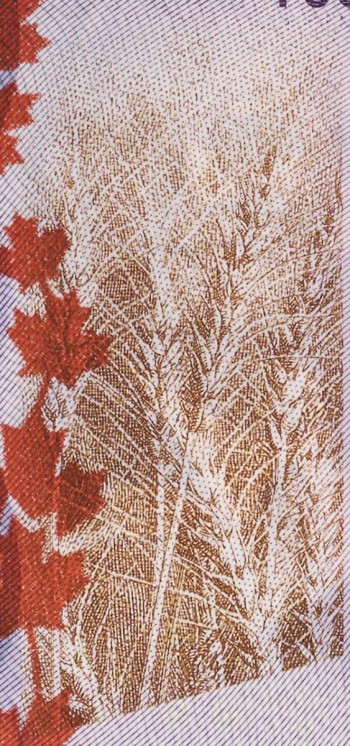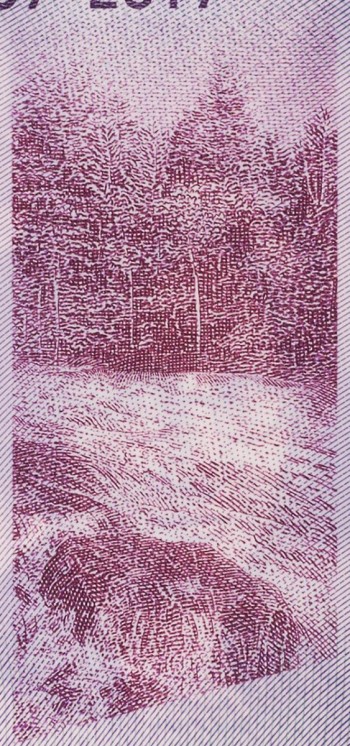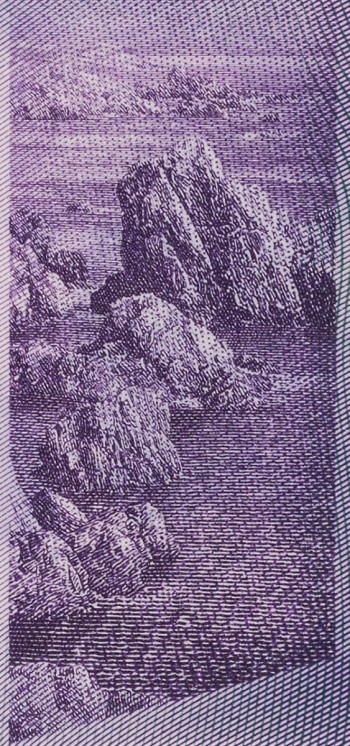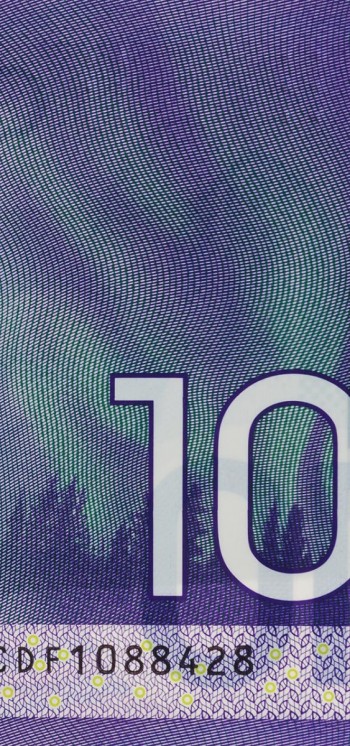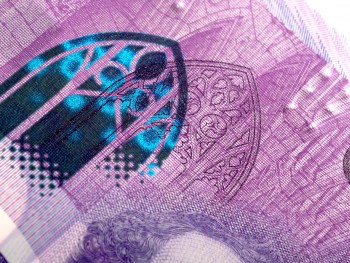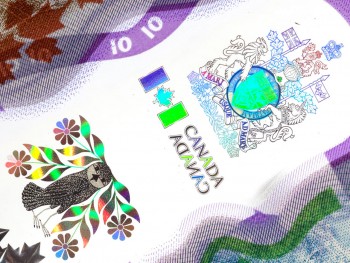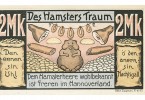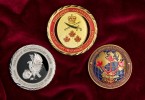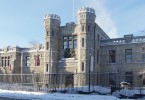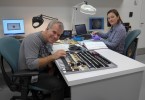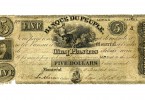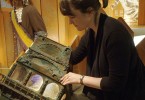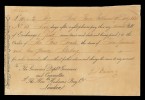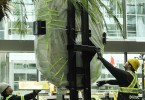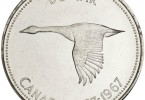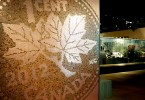The Canada 150 bank note is issued!
The public reveal of our new Canada 150 bank note design (we call it the C150), with its various ceremonies and crowd of dignitaries, was a pretty big deal (see the blog). The media event surrounding the same note’s release into circulation, (or “issue” as we like to call it) was, by contrast, a much quieter affair. Such things usually are. (No astronauts were involved—see the issue of the Polymer $5)
The new C150 $10 bill. As richly detailed a note as you’d hope to find.
In a modern twist, Governor Stephen S. Poloz took a “selfie” while holding a C150 note before meeting up with the Honourable Ginette Petitpas Taylor for the main photo‑op. Petitpas Taylor is the Parliamentary Secretary to the Minister of Finance and was representing the Honourable Bill Morneau at the event.
It was a two-part photo-op: the Governor and Petitpas Taylor posed across the street from the Bank holding notes and then walked the two blocks to a gift shop on Sparks Street to place those notes into circulation. The only slight drama arose from the weather. Not only did the wind play havoc with our subjects’ hair, but clouds kept passing over the sun, making the photographers sweat a bit as they coped with the constantly changing light. But Governor Poloz and Petitpas Taylor nevertheless braved the gusts, posing cheerfully with their new C150 bank notes.
There then followed the curious spectacle of a gaggle of media hurriedly lugging all their gear down Sparks Street and cramming themselves around the cash desk of a nearby gift shop. Mr. Poloz strolled in and bought some maple candy and Ms. Petitpas Taylor chose some soap. Both paid with crispy, new C150 notes, of course. When the dignitaries left, cameras crowded around the sales desk, while their owners made the clerk (who was a good sport about it) repeatedly take the bill out of the register and put it back again.
In my last blog about this note, I spoke about the portraits. Now, as promised, I’ll chat about the more than a dozen other visual elements on the back and front. From the public consultations that informed the design, it was clear that Canadians’ identification with the landscape remains very strong. Back in 1954, the Bank’s Canadian Landscape series of notes promoted Canadian identity through its regional landscapes, featuring big vignettes that beautifully captured a broad snapshot of our vast country. Mind you, the designers had eight notes to work with.
The 1954 Canadian Landscape series were our first bank notes to project a clear sense of Canadian nationalism.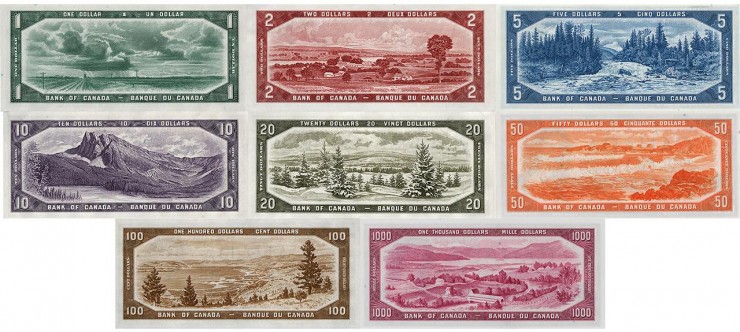
The C150 design team didn’t have the luxury of such a vast canvas and was challenged to represent Canada’s wildly diverse regions on the back of just one note. The resulting note’s five gorgeous landscapes manage to elegantly showcase almost all geological regions of Canada. We’re just that much more efficient these days.
Apparently not satisfied with the four portraits on the front and five landscapes on the back of the bill, the C150 team included another ten visual elements to further represent Canada’s culture, history and land—and further frustrate counterfeiters, of course. These elements are applied via a number of security printing methods employed by the Canadian Bank Note Company. Vignettes such as the arrow sash patterns at the top and bottom or the Hall of Honour are lithographic prints, while the features such as those in and around the large transparent window are printed using metallic, colour-shifting inks. These inks change colour when you tilt the bill and make the maple leaves at the bottom of the window appear to be three dimensional. Good old-fashioned intaglio printing originating from steel engravings was used for the portraits and landscapes, recognizable by lightly brushing your fingertips across their raised surfaces.
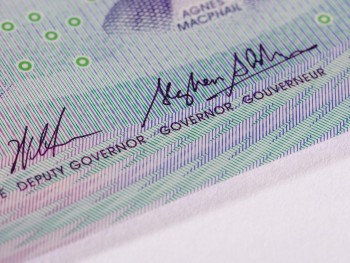
The pattern along the top and bottom of the bill is that of the Assomption Sash; as traditionally worn by Métis and Habitants.
In fact, so rich in detail is this note that you really ought to see it up close on the Bank of Canada’s website. There you’ll find a beautiful, fun and fascinating webpage with an interactive note you can flip over and inspect. You will also find background information on all the imagery along with a couple of really slick videos.
Better still, pick up a C150 note for yourself at your friendly, neighbourhood financial institution. If, like some of us, you are planning to keep the note, get two so you can spend one. It is money, after all, and it won’t commemorate anything while stored in your sock drawer.
The Museum Blog
Notgeld, emergency money from interwar Europe
Notes From the Collection: Recent Acquisitions
By: Paul S. Berry
We’re the Currency Museum, not the Mint
By: Graham Iddon
Notes from the Collection: Moving Forward
By: Raewyn Passmore
Notes from the Collection: A Buying Trip to Toronto
By: Paul S. Berry
Director’s chair : A little help from our friends
By: Ken Ross
The Cases are Almost Empty
By: Graham Iddon
Curators Begin Removal of Artifacts
By: Graham Iddon
Notes from the Collection : 2013 RCNA Convention Winnipeg
By: David Bergeron
First Artifacts to Leave the Museum: And they were big
By: Graham Iddon
Director’s chair : “I don’t know why you say goodbye, I say hello.”
By: Ken Ross
Remembering Alex Colville (1920-2013)
By: Raewyn Passmore
Farewell to the Currency Museum c.1980
By: Graham Iddon
